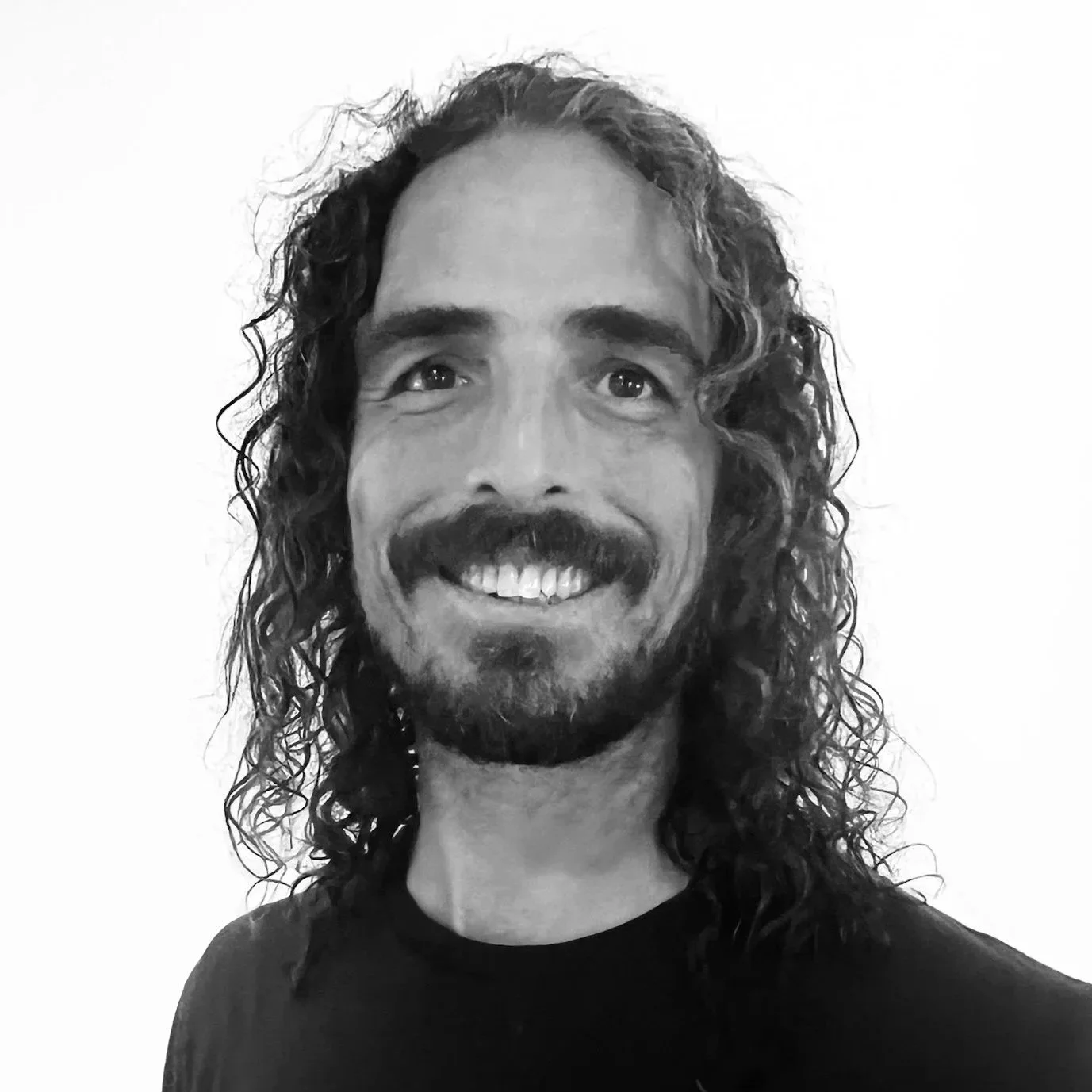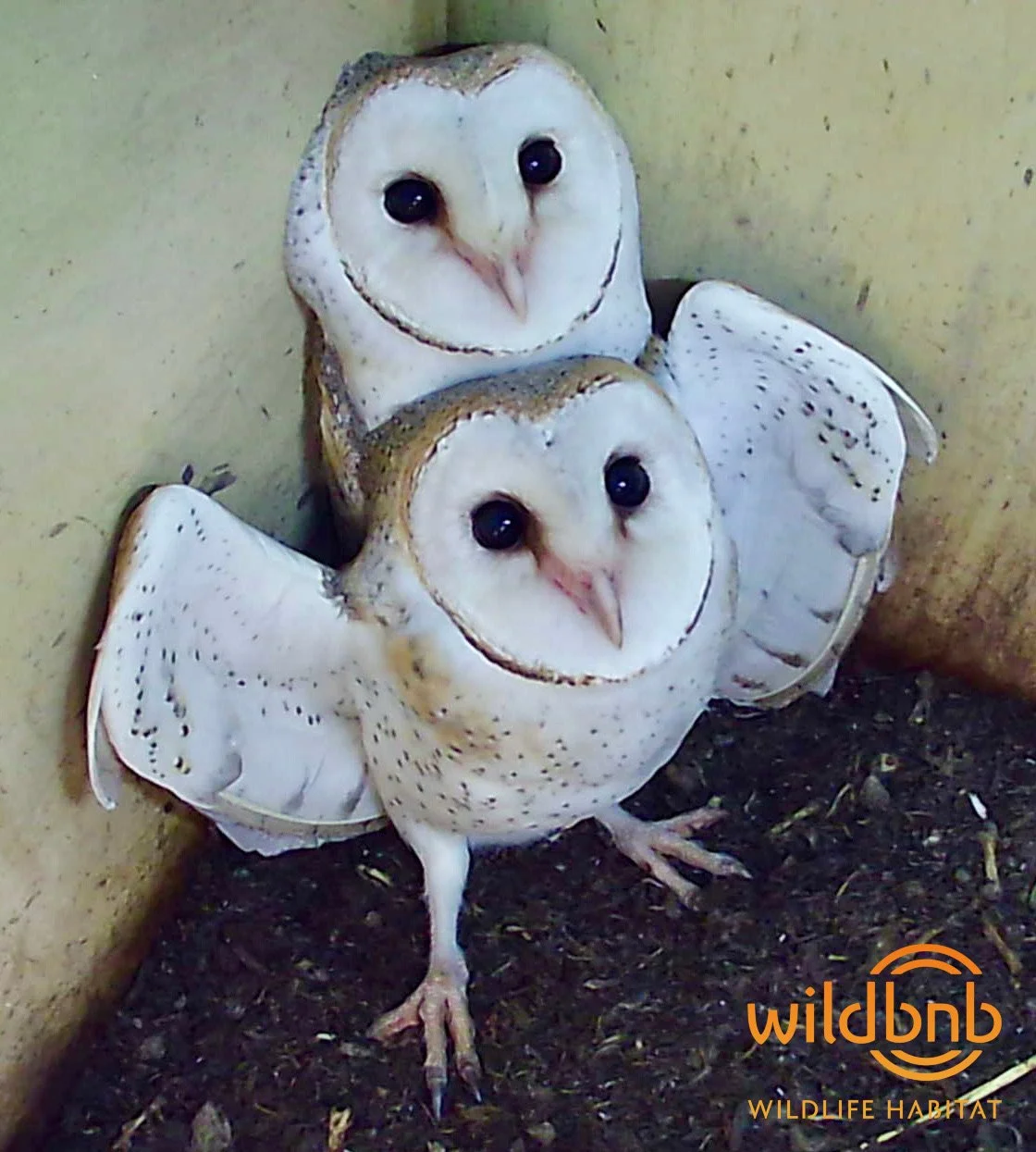Alastair Duncan On Innovative Nature-Based Enterprises Solving Wicked Environmental Problems
Alastair Duncan is the co-founder of Owls Eat Rats, a social enterprise helping farmers replace rodenticides with wild Barn Owls.
By creating safe nesting habitats on farms, the project taps into natural predation as a scalable alternative to chemical control - but it’s not really about pest management. At its core, Owls Eat Rats is about restoring natural capital and proving that ecological services can be practical, measurable, and good business.
Alastair comes from a background in community and environmental projects, but prefers to say he’s an expert in nothing, but is curious about everything. He builds things by asking questions, not pretending to have answers - and that approach has landed him in the middle of one of the most unexpected agricultural innovations in the country.
Alastair discusses harnessing innovative, natured-based business models to transform agriculture practices and address wicked environmental problems, and why networks of small innovative enterprises are essential for catalysing impact-led movements and systemic change.
Highlights from the interview (listen to the podcast for full details)
[Indio Myles] - To start off, can you please share a bit about your background and what led to your work in environmental change?
[Alastair Duncan] - I was a bit of a late bloomer. and like many people, I had a misspent youth. It took me a lot of steps to eventually get to where I needed to go, because while I’d always had an interest in environmental issues, I thought that was something other people pursued.
One day, while playing backgammon in Greece with an old mate of mine, they said to me, “What you’re doing is fine, but one day this is what you’ll be doing forever. You need to think about what you want to be doing forever, because pretty soon it won’t be a choice, it’ll just be reality.” This really hit me, and I started thinking about what I wanted my life’s work to be.
At the time, I was deep in the hospitality industry, but I realised that wasn’t where I wanted to be or what I wanted to be doing. I began exploring different ideas, and because I’d always had a strong environmental streak and been drawn to justice, I started studying international aid, development, and sustainable development.
Those studies showed me everything that was wrong with the world but gave me absolutely no answers! I ended up graduating as a mature-aged student, which left me wondering what next? Honestly, that’s how it has felt ever since, I’m always continually exploring the next step forward.
As the co-founder of Owls Eat Rats, can you share with our audience more about what this enterprise is doing and the impact it’s creating?
At face value, farmers have a significant issue with rodents. It’s a hidden issue that isn’t talked about much. The usual practice is to put out baits, but those are becoming less effective. It’s almost as though their impact on rodents is declining in proportion to the increasing negative impact they’re having on the environment.
Right now, farmers don’t really have any other option, there’s nothing viable or scalable beyond baiting. What we offer is a nature-based alternative. We work with farmers to create safe habitats for owls to move in. They breed, and they hunt rats.
The breeding is key to our work. While owls will always eat rats (they love them), during breeding events, they can take out around a thousand rats per event. On our pilot site, we’ve had back-to-back breeding events across multiple boxes. At the moment, we have nine active nest sites. Over a 60-day period, that means roughly 9,000 rats removed from the system. Scaled over a year with repeated breeding events, that adds up to a huge impact without using rodenticides.
Ultimately, this work is about more than pest control. It’s about boosting biodiversity on farms, supporting natural capital, and demonstrating that natural services have commercial value. Conservation is wonderful, but for us to remove rodenticides from the system, we had to create an alternative that farmers would find practical and attractive. What we’re doing is commercial conservation, and we believe it represents the future.
In your work, you’re clearly introducing an innovative approach to addressing this problem. How are you working with farmers to shift their mindsets and encourage behavioural changes so they adopt innovative solutions?
Where we’re currently operating, in the Northern Rivers, the response has been really positive. The farming community there loves it, and we’ve had a lot of interest and support. But rolling this out at scale, especially into more factory-style farming areas, is much more challenging. The Northern Rivers is a bit of an outlier, not the norm.
In larger factory farming regions, there’s greater reliance on farm income and productivity, and the risks are higher. While many of our smaller Northern Rivers farms are very serious farming operations, they’re in a different position altogether. That’s why we have to prove what we’re doing works.
We’re very careful about what we say. We frame it as, “this can be this,” but we’re not selling pest control, at least not yet. We’re still pre-commercial, very much on a journey with our farm partners. At its core, our work is about boosting biodiversity, unlocking natural capital, and showing how natural services can support farming systems.
Essentially, we start small (one point, one site) and then grow outward, like ripples in a pond. Establishing breeding colonies of owls takes time, so we build this idea gradually within a community. It’s effective because farmers have a strong sense of FOMO. If something works on one property, others quickly want to try it too! That’s how we see scaling: working closely with each community, understanding their needs, and identifying a transitional pathway away from business as usual.
We’re looking to expand into Bundaberg next, particularly with macadamia growers. They’re already among the most aware of rodent damage in Australian horticulture. In many other industries, it’s simply not discussed as openly, except in grains, and we’re not yet ready to take this to broad-acre farming.
Our strategy is to repeat the model by finding early adopter growers, working closely with them, and then expanding outward. At the same time, we’re collaborating with academic institutions to help prove the model and better understand why our pilot sites have been so successful.
As you’ve built this solution and explored its potential for scale, what lessons have you learned about creating commercially viable, environmentally restorative solutions?
One of our earliest assumptions was that this would be quite a niche offering. Our initial customer profile was very narrow: this work sits within a broader suite of nature-based solutions we’re exploring such as bats eating bugs, native pollinators boosting crops, and other biodiversity services. We take a ground-up approach to restoring ecosystems on farms.
At first, we thought only smaller or more environmentally focused growers would be interested. But what surprised us is that some of the largest growers, with big industry footprints, have reached out and said, “Prove out this idea. This is essential. This should be how we’re doing business.”
That’s been a huge shift for us. Often, when we ask farmers questions like, “Do you know how many rodents toxic baits actually control?” the answer is, “We don’t know, we just do it.” It’s standard practice, but it’s not measured, and many are eager to find better alternatives once they see the potential of nature-based solutions.
What we’ve learned is that a love for land and environment is pretty universal. Farmers feel it deeply, but they also absorb enormous risks every day just to keep food on our tables. Our role is to support both sides of the equation. We’ve got two clients we need to protect: our owls, and our farm partners. Taking that dual approach of valuing both biodiversity and farm productivity is the backbone of our business.
You’ve described yourself as being ‘curious about everything’ rather than an expert. How has this mindset shaped your journey as a changemaker, and what advice would you give to others who are starting out in social enterprise?
Take every single phone call from every single person. You never know what it’s going to uncover. I’ve had random emails and conversations turn into incredible opportunities.
You don’t have to know everything. I often say I’m an expert at nothing, and that’s true. My whole degree was essentially about learning to sit at the nexus, without needing to generate my own ideas. That’s not necessary. My strengths lie in problem-setting, problem-solving, and looking at issues from completely different angles.
I spend a lot of time talking with amazing, incredibly smart people. Just today I spoke to three academics from three different institutions, each offering ideas from a different perspective on our work. Sitting there absorbing that knowledge is inspiring. It fuels my curiosity.
The key is not to have all the answers, but to know how to set the problem. When you approach people without preconceptions, they may not know exactly what you want from them. But if you frame the issue as an open conversation where you’re speaking to the problem and around it, you get a much broader range of answers. That’s where the kernels of solutions begin to emerge.
Do you have any strategies you use to make sure you’re having those deeper impact-led of conversations?
No, not really. We don’t have a formal strategy for this. What we do instead is give space to the people who actually know, and then we try to facilitate the conversation. From there, it’s about asking, “How can we turn this into an opportunity for everyone?”
It always has to be mutually beneficial, we’re not looking to take from people. We’re looking to bring opportunities to everybody. That might even mean asking, “Is there a funding application we can do for you?” even if it only sits on the periphery of our work. That’s where things work well: when you lift the tide for everyone. Supporting other people’s ideas is often just as important as advancing our own.
Of course, we have a strategy for growth and for building the business, things around our proof of concepts and scaling. But at the core, it’s about talking to interesting people and letting them guide the process a little.
What key qualities or traits do you see as common amongst social entrepreneurs?
I did the Taronga Hatch program, which was my first real foray into social enterprise. We’d always been operating in that space (doing conservation work without much financial return) but the accelerator was a turning point. That program, run with Tom from Impact Boom, introduced me to networking and many core business concepts.
To be honest, networking makes me want to cry. I find it really tough, but at the same time, I’ve come to see the deep value in the business side of things. Having the right tools to pressure test ideas properly is essential, and I can’t overstate how important that’s been. What’s helped me is shifting my mindset.
Networking in the traditional sense doesn’t resonate with me, But building a network around our idea brings me pure joy. It means talking to wonderfully interesting people, not to promote myself as Alastair, but to explore our idea and the ecosystem around it. For me, that’s the most important part of social enterprise: creating networks and communities around impactful ideas.
It’s less about selling yourself and more about finding like-minded people who are excited to contribute, collaborate, and reciprocate. That back-and-forth exchange is where the real value lies.
Do you see any opportunities right now for purpose-driven businesses, particularly those working in environmental innovation?
Very much so. Right now, I’m part of another incubator under the Horticulture Innovation AgriFutures Build program. It’s been an essential step for us because it connects us with a wide network of horticulture professionals.
What’s exciting is that even within a more corporate space, there’s clearly room for social enterprises with novel ideas. Business as usual is still essential as it keeps food on the table for a lot of people, but it won’t solve wicked problems. Those require tailored, innovative solutions.
If you flip the perspective, wicked problems are actually opportunities to move away from business as usual. I love the theory of panarchy, which suggests that small but effective movements can shift the overall system in incremental ways. The system will naturally try to shift back, but these small changes can eventually transform it. Big, rapid changes often trigger collapse, whereas gradual, resilient solutions build lasting change.
You can already see this in agriculture. After cycles of droughts and floods, large factory farming systems have proven vulnerable. Smaller, decentralised farming systems (many of which are highly profitable in their own right_ are weathering these shifts better.
It’s also not just agriculture. Across sectors, we’re seeing that wicked problems can’t be solved with business as usual, but they can be addressed through smaller, more resilient, and tailored solutions. That’s where the big opportunities lie for purpose-driven businesses.
What inspiring projects or initiatives have you come across recently creating a positive change?
All the people I met through the Hatch program were wonderfully inspiring, and I still follow their work closely. I’d encourage anyone to look up the entire Hatch network (and not just my cohort), because there are so many amazing projects emerging from it. I’ve even been collaborating with people from across different cohorts.
I’m also excited about what’s happening in the nature repair market. There are incredible businesses starting up in this space, many of which are going to launch soon. It’s a tricky one for me: I’m against the idea of putting a dollar value on biodiversity, because it’s inherently priceless. But at the same time, I see the necessity. Once biodiversity has a commercial value, people are more motivated to protect it. Those doing good can gain recognition and commercial interest.
We’re currently working with EnviroDNA, which uses eDNA tracking across project sites. Their work is fascinating, and the nature repair market will only boost their impact further.
It’s all interconnected. For example, my co-founder also founded Wildbnb Habitat, which is working with the Minyumai Rangers. The Minyumai Rangers team is working with WWF. Around that, there are First Nations–led business systems, environmental repair markets, and landcare groups.
Rather than naming just one inspiring initiative, I’d say it’s the entire ecosystem and web of responses emerging to tackle these wicked problems that excites me.
To finish off, Alastair, are there any books or resources you’d recommend to our audience?
It’s a bit of a slog to get through, but Radical Mycology by Peter McCoy is the one I’d recommend. It builds on Paul Stamets’ earlier work, which is considered something of a bible in the field.
If anyone wants to dive deep into the nitty-gritty of mycology, that’s the book. Personally, my goal in life is to have a hobby again, and when that happens, I want it to be mycology. This book would be a great starting point for anyone wanting to understand more about it.
Initiatives, Resources and people mentioned on the podcast
Recommended books
Radical Mycology: A Treatise On Seeing & Working With Fungi by Peter McCoy









